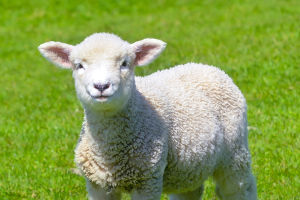The Eurasian Blue Tit (Cyanistes caeruleus) is a small but strikingly beautiful bird native to Europe and parts of Asia.
Known for its vivid blue and yellow plumage, this avian gem captivates birdwatchers and nature enthusiasts alike.
With its energetic behavior and distinctive calls, the Blue Tit has become a cherished part of the avian world. Let's explore the fascinating aspects of Cyanistes caeruleus, including its physical characteristics, behavior, habitat, and conservation status.
Physical Characteristics
The Eurasian Blue Tit is easily recognizable by its bright blue cap, blue wings, and tail, complemented by a yellow underside and a distinctive black line running from its beak through its eyes. This colorful appearance makes it a standout among the diverse bird species found in its range. Adult Blue Tits measure approximately 11 to 12 centimeters (4.3 to 4.7 inches) in length and weigh between 9 and 12 grams (0.3 to 0.4 ounces). Their small size and vibrant colors make them a delight to observe in their natural habitat.
Behavior and Diet
One of the most remarkable traits of the Blue Tit is its lively and inquisitive nature. These birds are known for their acrobatic feeding techniques, often seen hanging upside down while foraging for insects and seeds. Their diet primarily consists of insects, spiders, and other small invertebrates during the breeding season, while they rely more on seeds and berries during the winter months. Blue Tits are also known to visit bird feeders, where they exhibit their remarkable ability to adapt to different food sources.
Their feeding behavior is not only fascinating but also highly effective. Blue Tits are known to use tools, such as pecking on surfaces or manipulating objects with their beaks, to access food. This cognitive ability highlights their intelligence and adaptability in a variety of environments.
Habitat and Range
The Eurasian Blue Tit inhabits a wide range of environments across Europe and parts of Asia, from temperate forests to urban gardens. They prefer deciduous and mixed woodlands with plenty of tree cover, as well as areas with abundant food sources. In urban settings, Blue Tits can often be found in parks, gardens, and even on the outskirts of cities. Their adaptability to various habitats has contributed to their widespread presence across their range.
During the breeding season, Blue Tits build their nests in tree cavities, old woodpecker holes, or artificial nest boxes provided by bird enthusiasts. They line their nests with feathers and other soft materials to create a comfortable environment for their eggs. The female typically lays between 8 and 12 eggs, which she incubates alone while the male forages for food to support the family.
Conservation Status
The Eurasian Blue Tit is currently classified as a species of "Least Concern" by the International Union for Conservation of Nature (IUCN). This status reflects the bird’s stable population and widespread distribution. However, like many other bird species, the Blue Tit faces challenges such as habitat loss and changes in food availability due to environmental changes.
In recent years, conservation efforts have focused on preserving natural habitats and promoting bird-friendly practices in urban and rural areas. Providing nest boxes and creating bird-friendly gardens can significantly contribute to the well-being of Blue Tits and other avian species.
Cultural Significance
The Eurasian Blue Tit holds a special place in various cultures, often symbolizing joy and resilience. Its vibrant colors and lively behavior make it a popular subject in birdwatching and nature photography. In some regions, the Blue Tit is also associated with folklore and traditional beliefs, further enhancing its significance in human culture.
The Eurasian Blue Tit (Cyanistes caeruleus) is a small bird with a big personality. Its stunning blue and yellow plumage, intelligent behavior, and adaptability make it a favorite among birdwatchers and nature lovers. While its conservation status remains stable, ongoing efforts to protect its habitat and support bird-friendly practices are crucial for ensuring that future generations can continue to enjoy the beauty and charm of this remarkable species. Whether in a serene woodland or a bustling city park, the Blue Tit remains a vibrant testament to the wonders of the natural world.


